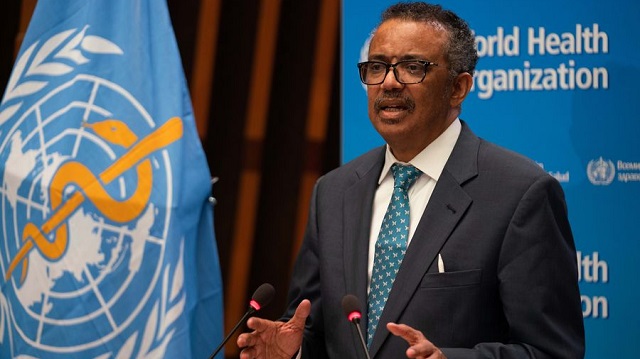
Kampala, Uganda | THE INDEPENDENT | The vast majority of COVID-19 vaccines administered have so far gone to wealthy nations, with only 0.2 per cent coming to low-income countries like Uganda.
Statistics released by the World Health Organization show that on average in high-income countries 1 in 4 people has received a COVID-19 vaccine, yet in low-income countries it’s 1 in 500+. More than 700 million vaccine doses have been administered globally.
“There remains a shocking imbalance in the global distribution of vaccines,” the WHO chief Tedros Adhanonom Ghebreyesus said in a virtual briefing from Geneva. On average in high-income countries, almost one in four people has received a vaccine. In low-income countries, it’s one in more than 500. Let me repeat that: one in four versus one in 500,” Dr Tedros said.
COVAX, the global solidarity initiative for universal access to COVID-19 vaccines also experienced a shortage of vaccines. While the mechanism has distributed some 38 million doses so far, it was expected to deliver nearly 100 million by the end of March.
Uganda for instance received 864,000 doses of the AstraZeneca COVID-19 vaccine, shipped via the COVAX facility. These are part of the 3,552,000 doses of the AstraZeneca vaccine allocated to Uganda for the period of January – June 2021. However, although the remaining 2,688,000 doses were expected by June 2021, the WHO recently warned that delivery could be delayed by recent developments in India.
The WHO Country Representative Dr Tegnen Yonas Woldermariam told Journalists in Kampala that the source for Uganda’s COVID-19 jab is the Serum Institute of India, yet the country recently announced that it was halting vaccine experts to first, serve their domestic market. The institute, one of the world’s largest manufacturers of coronavirus vaccines said their production capacity is very stressed.
So far, the Serum Institute has an agreement to supply 166 million doses to the Indian government, with another firm, Bharat Biotech, supplying 10 million doses. India also has licensing deals with the Russian Gamaleya Research Institute to produce 200 million doses of the Sputnik vaccine.
But the vaccine producers have raised concerns about their ability to meet their production targets and warned of raw material shortages affecting production, even for inoculating the Indian population, at a time when India is desperate for all the doses it can get. Reports indicate that infections are soaring in India, topping 50,000 new infections per day. The country has a population of 1.4 billion people.
In line with this development, Dr Ghebreyesus told journalists that while some countries and companies plan to do their own bilateral vaccine donations, bypassing COVAX for their own political or commercial reasons, the arrangements run the risk of fanning the flames of vaccine inequity.
COVAX partners, who include Gavi, the vaccine alliance, are working on several options to scale up production to meet the goal of delivering two billion doses by the end of the year. But Dr Seth Berkley, the Chief Executive Officer at Gavi, highlighted the need for continued solidarity.
“What we are now beginning to see are supply constraints, not just of vaccines, but also of the goods that go into making vaccines,” he said.
COVAX is in discussions with several high-income countries to get them to share surplus vaccine doses, he said. It is also developing cost-sharing mechanisms so that low-income countries can buy additional doses through COVAX, funded by multilateral development banks. Dr Berkley added that financing is also needed as demand for vaccines has risen with the emergence of new COVID-19 variants.
Dr Maria Van Kerkhove, WHO Technical Lead on COVID-19, added that while vaccines are a powerful tool, they alone will not end the pandemic.
“The trajectory of this pandemic around the world is going in the wrong direction”, she said, referring to six consecutive weeks of increased cases and rising deaths. “We have tools right now that can prevent infections and can save lives, so we need to find reasons why measures aren’t in place…and find solutions to actually get these in place.”
*******
URN
 The Independent Uganda: You get the Truth we Pay the Price
The Independent Uganda: You get the Truth we Pay the Price



